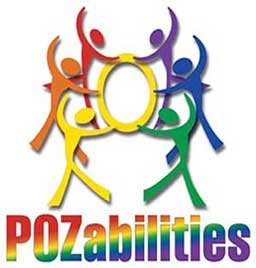Heart disease in PLWH
Hello to the San Diego HIV Community from the SDHIV Consortium. This month, we present a scientific update on Cardiology. You can watch Dr. Karla Torres’s talk on HIV and Cardiology in the posted meeting recording (YouTube link).
Key Points:
More heart and stroke in PLH
Tailor HIV therapies eg. Abacavir recommended because of increased Cardiovascular Disease (CVD) risk
Statins recommended for all PLH at high risk of CVD
Recent studies show increased risks of heart attacks and strokes in people living with HIV, exacerbated by traditional risk factors like smoking, poor diet, and high stress levels. Women living with HIV are at an even higher risk and may experience different heart attack symptoms compared to men.
The SMART trial indicated that effective antiretroviral therapy (ART) lowers cardiovascular disease (CVD) events, making it crucial to control HIV replication. ART should be tailored for those with existing heart disease, particularly avoiding abacavir due to its potential association with increased CVD events.
For hypertension management, general population guidelines apply due to limited specific data for individuals with HIV. The REPRIEVE trial has found that moderate-intensity statin therapy is effective for people living with HIV aged 40-75, significantly reducing CVD events. Patients with high LDL cholesterol or diabetes also require careful statin therapy management. is essential to note that traditional cardiovascular risk calculators often underestimate heart attacks and stroke risks in people living with HIV. Consider discussing statin therapy options with your healthcare provider based on your risk factors.
A recent recommendation from the Department of Health and Human Services (DHHS) suggests prescribing statins for patients with HIV over 40, unless contraindicated. Be sure to evaluate your overall cardiovascular risk with your medical provider. New guidelines recommend at least moderate-intensity statin therapy for individuals with HIV aged 40-75 at intermediate or low CVD risk, consistent with those for the general population for patients aged 20 and older. These guidelines were updated in February 2024.
High risk (Initiate high-intensity statin therapy):
People with or without HIV aged 40 to 75 with a 10-year ASCVD risk of at least 20%
People with or without HIV aged 20 to 75 with an LDL-C of at least 190 mg/dL
Intermediate risk (Initiate moderate-intensity statin therapy):
People living with HIV aged 40-75 with a 10-year ASCVD risk of 7.5% to less than 20%
People diagnosed with diabetes mellitus
Borderline risk (Initiate moderate intensity statin therapy):
People living with HIV aged 40-75 with a 10-year ASCVD risk of 5% to less than 7.5%
Other considerations:
The rationale for the guidelines above, as supported by the REPRIEVE trial: HIV is considered a "risk enhancer" that should be considered when deciding whether to prescribe statins for people aged 40-75 living with HIV at intermediate or borderline risk. High-risk patients should be considered for high-intensity statin therapy regardless of
HIV status.
Biologically, women with HIV have a higher risk of CVD than men with HIV.
Traditional risk calculators tend to underestimate CVD risk in patients with HIV, especially in cis-females, black women, and people living in “high-income” populations. Standard is to use CAD risk calculator, but underestimates in PLH (People Living with HIV); https://www.uptodate.com/contents/calculator-cardiovascular-risk-assessment-in-adults-10-year-acc-aha-2013-patient-education
Fibric acid derivatives and omega-3 fatty acids can be used for people living with HIV with hypertriglyceridemia.
Aspirin can be used for secondary prevention of MI or stroke. There are no data to support a primary prevention indication.
Control of hypertension is a strong component of CVD risk management in people living with HIV. Again, guidelines for the general population should be considered.
Lifestyle modification and control of smoking reduce CVD risk score significantly. All people with HIV should encourage themselves to stop smoking, control their weight, and
engage in regular aerobic activity to reduce stress and CVD risk (Feinstein, 2019).
Understanding how statin therapy helps:
Statins can lower cholesterol, reduce inflammation, and modulate the immune system. They may help prevent heart attacks, strokes, and premature deaths. The new guidelines are available online at clinicalinfo.hiv.gov.
Associated Presentations:
Cardiovascular Disease in HIV ppt –to be posted
